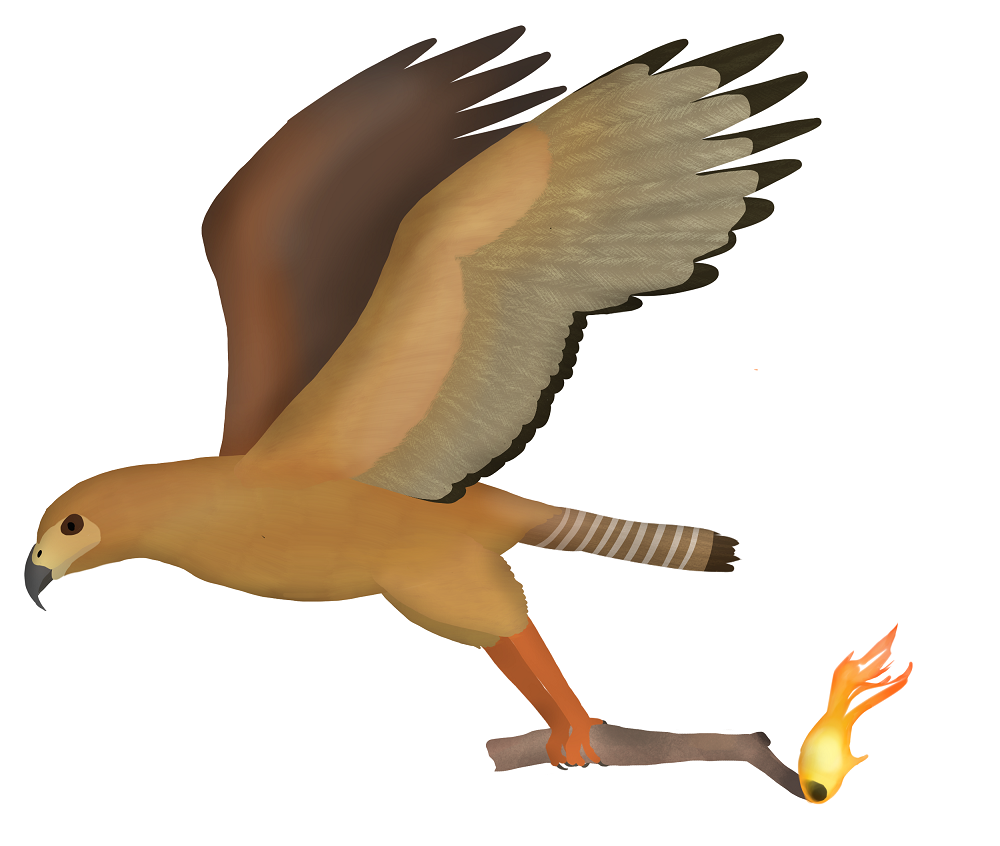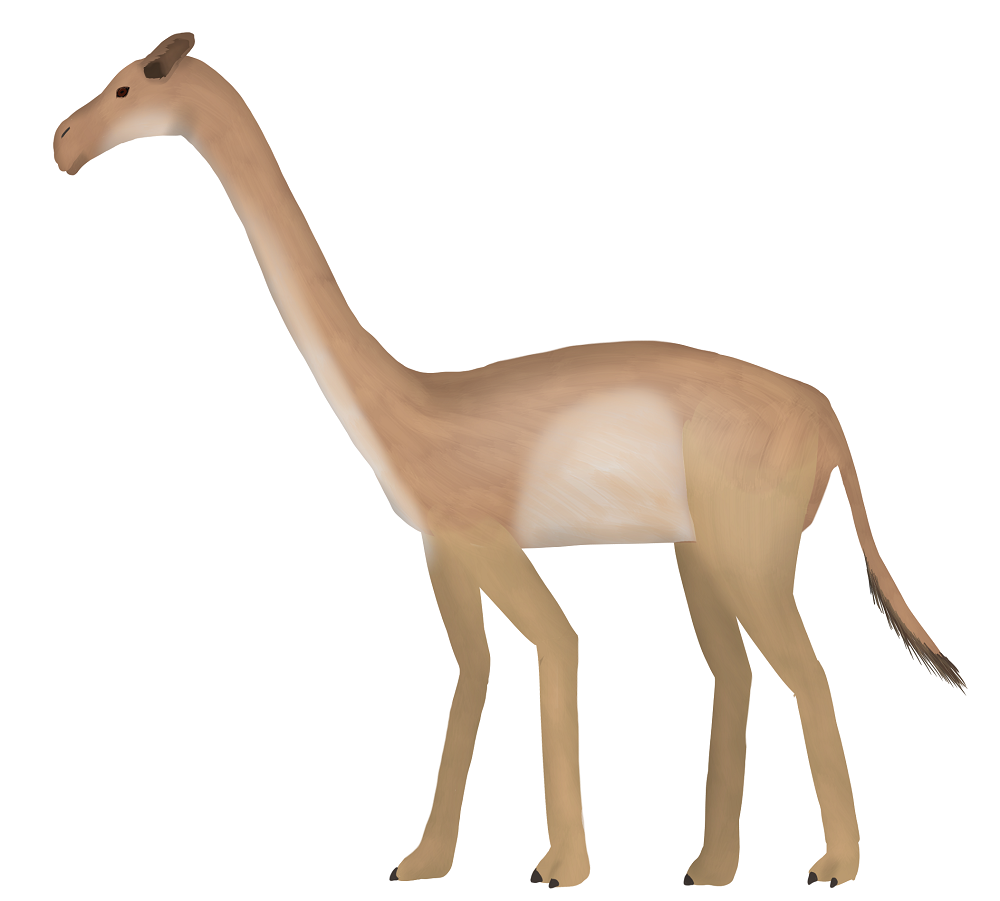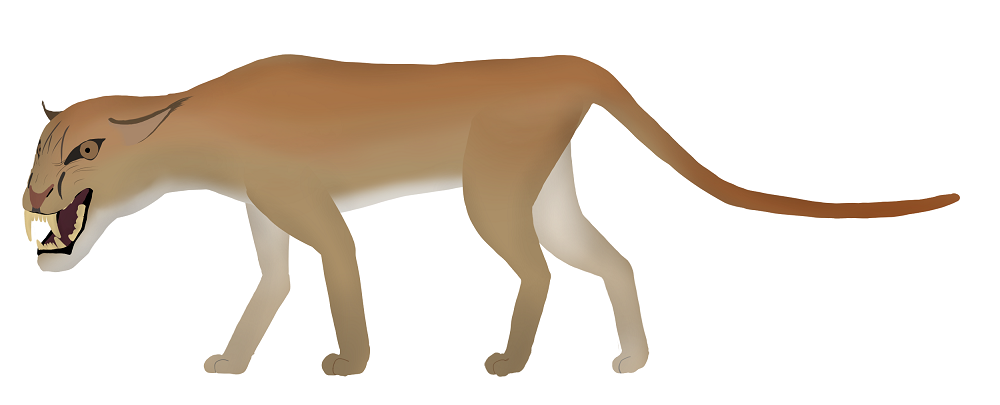
|
Australian Outback
10 million years hence
The Australian outback is climatically much the same ten million years in the future. On the surface, it would look like nothing had changed since even the Pleistocene. The Holocene Extinction has left a heavy impact on the fauna, however. Australia is an isolated continent, which left its unique wildlife vulnerable to the effects of introduced species. Dozens of native marsupial, bird, and reptile species went extinct, unable to adapt to the presence of these invaders. Ten million years in the future, however, these introduced species have become naturalized, and the ecosystem has reached a new equilibrium.
Large herbivores roam the outback as they did in the last glacial maximum, but now they are descended from the camels introduced to the continent in the time of humans. They form large mixed herds with two survivors from the Holocene, emus and kangaroos. These are preyed upon by monitor lizards and leopard-sized descendants of feral cats. Other animals that persist include rodents, bats, and descendants of invasive cane toads.
| Australian phoenix |
Latimer's camel |
Notopanthera |
|
Click on a tab to learn more about that species.

Neomilvus pyromaniacus
In the time of humans, wildfires were prevalent in Australia. The dry conditions fueled the growth of massive fires. While these fires may have been started or exaggerated by human activity, humans were not the only species to influence fire spread. Several species of birds of prey were reported to spread fires into unburned areas, to prey on small animals attempting to escape. By ten million years in the future, these birds have taken the next step - they light the fires themselves.
The Australian phoenix has longer legs than the kites it is descended from, making it more adept at terrestrial locomotion next to burning outback. Although not all prey is caught at the edge of a fire, starting fires to flush out small mammals and rodents is not an uncommon practice in this species. Populations that more frequently hunt with fire have developed more ecologically sustainable burning practices, and this knowledge appears to be picked up by every bird in the area. The frequency of phoenix-started burns actually reduces the prevalence of catastrophic megafires within its range, by clearing out dry underbrush before too much of it accumulates.

Notocamelus latimeri
Dromedary camels were introduced to the continent of Australia in the time of humans. Originally imported for transport and construction, a large feral population quickly gained a foothold and grew rapidly. Although many culls were undertaken, the population failed to be exterminated from the continent. Ten million years in the future, the camels have now completely assimilated with the ecology of Australia.
Latimer’s camel is the largest herbivorous animal on the continent of Australia; large individuals have heads held 3.5 meters off the ground. It is leaner and taller than its ancestors, and has lost the fatty hump they bore. Latimer’s camel is equally at home in high outback and slightly wetter grassland habitats, and has a broad diet of grasses and xeric shrubs. It is a social animal, and can often be found in mixed herds with kangaroos, emus, and lagomorphs.

Notopanthera ferox
In the time of humans, cats were a nuisance in Australia. Since 1820, over three million feral cats have come to populate the continent. Cats are extremely effective predators, and their spread has contributed to the extinction of at least 22 native mammal species. Even today, feral cats have begun to grow abnormally large, reaping the rewards of their success. Lax control programs have ensured their survival past the Holocene, and as time went on the cats became progressively larger and more ambitious.
Notopanthera is the largest terrestrial predator in Australia ten million years hence, with large individuals being comparable in size to a mountain lion. Its upper canines have grown so large as to stick out of the mouth when closed. This re-evolution of saber teeth is not surprising, as it had evolved at least six times previously in synapsids. A pursuit predator, it preys upon kangaroos, emus, and camels. It’s most common in open, drier habitats, but it is versatile and can be found across the continent.
|
|




